#on'yomi
Text
Eternal Zero - edit
youtube
#Eternal Zero#Samurai#Bushido#Japan#edit#nippon#Nihon#land of the rising sun#hero#the three kingdoms#on'yomi#hon#nichi#niti#jitu#Nihongo#Nippongo#slant eye#zipper head#slopehead#zipperlid#gook#Banzai#Tenno Heika#Youtube
3 notes
·
View notes
Text
Someone better at reading both traditional Mandarin script & Japanese Kanji tell me how garbage these names are please, I need to know where I fucked up & I mean that sincerely:
Wo-Chien: Kobashira (蠱柱「こばしら」) Cursed Tower/Poison of (cremation) Ashes/Accursed Deity/Column of Miasma/Cursed Remains or Spirits
Chien-Pao: Seppen (雪片「せっぺん」) Snowflake/Snow Pea/Blade or Edge of Snow/Perfectly Defiled
Ting-Lu: Teitō (釘頭「ていとう」) Nail Head/Staring Head/(to)Pierce (one's) Head(with a nail)/Metal Leader(something or someone in front OR person in authority)/(to)Die (of a) Headache
Chi-Yu: Mikogane (御金「みこがね」) Heavenly or Godly Tribute/Authority of Gold or (trade value) "currency"/Driven Away (by) Stunning Beauty/Imperial Control (of) Wealth/Golden and Godlike (Tyrannical*) Ruler
I had a lot of fun coming up with these & looking at the etymology behind a lot of characters (Proto-Sino-Tibetan glyphs are SO COOL AHHHHHH???) so even hearing "wtf these are such a stretch & sound stupid you weirdo won't be a waste of time for me, I swear.
#pkmn#linguistics#language#mandarin chinese#japanese kanji#on'yomi#hiragana#ruinous treasure quartet#sv spoilers#archaic japanese#proto sino tibetan#PST#special interest#kodoku#i was just re reading up on this & gu ritual magic & on hitobashira while coming up with a nickname for my wo chien in violet#incidentally i named chien pao seppen (snowflake also a partial pun on snow pea)#my ting lu is named teitō (a double play on words with alternate readings of kanji; basically means nail head + head but more layers)#*i actually misremembered this & the two kanji as a compound mean nailhead actually!#i remembered the breakdown backwards lol#anyways finally chi yu is made up of the kanji for royalty/nobility (o-) which can be read in kan'on pronunciation as 'gyo'!#gyo = fish in compounds like 金魚(kingyo/goldfish) or 人魚(ningyo/mermaid)#+ the (archaic?) kanji for gold/money/currency#:3c i hope even if it's clumsy it at least is a little entertaining for someone else 🤟🥰
2 notes
·
View notes
Text
On'yomi, or it's all Greek to me
(I'll describe something really useful for memorizing the on'yomi readings of many kanji at the end of the article, so you might also want to skip ahead. It's the part with all the kanji in it, can't miss it, really.)
When you learn Japanese, you learn many facts that sometimes make you wish you didn't. You happily beaver away at learning to write kanji only to pick up on the fact, that Japanese has two predominant ways to read almost any kanji: on'yomi and kun'yomi.
You could on'yomi "the Chinese readings" and kun'yomi "the Japanese readings" and you would be both right and wrong. So very wrong.

Well, not entirely. The notion is actually useful. On'yomi are readings derived from the evolving Chinese language of different time periods but pronounced wrong. (Remember, Japanese doesn't emulate Chinese pitch and has a limited set of sounds.) And the kun'yomi preserve various readings from various parts of Japan that were the sounds of the original Japanese language predating the Chinese writing system. (Get the deets here.)
Wait. If you have native Japanese sounds, why do that? Who on Earth would do such a thing!?
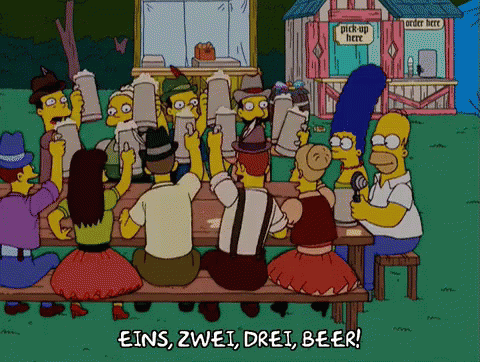
Right. It's us! (I'm German.) German uses words derived from Latin and Greek a lot in spite of perfectly usable German words meaning the same or similar things. So I'm the one to talk, huh?
"die Intention" - the intention. Perfectly German word? "das Vorhaben," or better, "die Absicht."
"die Prätention" - basically to give yourself airs. Perfectly German word? "die Anmaßung."
"die Restoration" - the restoration. Perfectly German word? "die Wiederherstellung."
Latin was the language of the Roman empire, but this impacted more the cultures abutting the Mediterranean and their "Romanic" languages - Spanish, Italian (of course), and French, for example. The basic stock of the language took in a lot of Latin words, they are at the core.
Germans on the other hand, thanks to "Herman the German", stayed mostly independent from the Roman empire and played part in eventually bringing it down. These proto-Germans had their own language to start with, and probably some form of sour kraut. So why all the Latin and Greek?
Latin is the language of many academic professions, especially law (Roman law is the historic origin of most western law) and medicine (partially with the intention you don't understand what your doctor is saying about you!). Universities in the middle ages and beyond relied on Latin as the language of exchange. Newton wrote about gravity in Latin. (And lots of other things. A busy bee, Newton was.)
These pesky academics then went on the coin all kinds of complicated words for newfangled technology that the ancient Greeks and Romans surely had envisioned at some point. Now wait. That was Jules Verne.
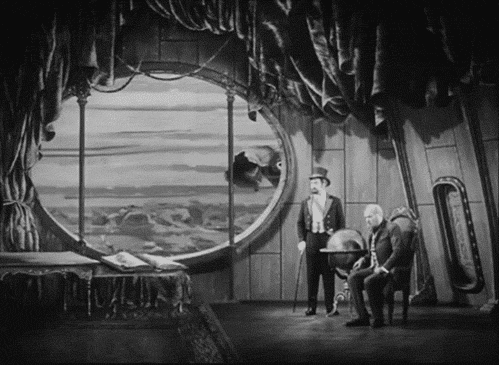
Television - far-away seeing. Oh wait, no, that's telescope. My bad.
Automobile - it moves by itself.
Mobile phone - movable sound.
Arithmetic - something about numbers and counting.
Algorithm... Ha! Gotcha! Sounds Greek, right? It's derived from the far more accessible Arabic...
My examples are English but exactly the same words exist in German with minor spelling differences - "Television" oder "Fernsehen", "Automobil" or simply "Auto," "Mobiltelefon" or simply "Handy" (say what?), "Arithmetik" and "Algorithmus."
So, we're a mess, huh? Germans can't speak German without resorting to Latin, Greek, English ("Computer", "Handy"), a bit of French, Italian, Yiddish... and we mangled most of it. We can't help it. Most of it we translated to our own sounds. (That will show our neighbors and compatriots what we think about their invasive words. We'll use them but make you cringe.)
Don't get me started on English. A Celtic language mostly overwritten by Anglo-Saxon Germanic invaders with Frisian partially overwritten by originally Norse French (Norman) invaders, stuffed to the brim with Latin and not even the same root word for an animal and its meat. (Eventually, veganism might take care of that one.)
Deep breath. It's fine now.
Compound words
Now that was a lengthy excursion amounting to nothing, right?
Well, get used to it.

If you use a single kanji word, you typically use the kun'yomi sound. Because there was already a Japanese word representing that concept when writing arrived. Also, this is true of most verbs, adjectives, and adverbs, and some compound words (featuring multiple kanji). The tell-tale sign is typically the presence of some hiragana when writing it.
There are adjectives that don't have hiragana, like "dislike," one of the meanest little effers in the Japanese language. Its sounding ("kirei") ends in -i, but it isn't an i-adjective. It is an adjective, but it doesn't have any hiragana attached, either. It's a na-adjective that ends in -i. There are good reasons to dislike "dislike."
But in general the presence of hiragana puts you firmly in the territory of the kun'yomi readings. So a lot of common Japanese is unsurprisingly native sounds, just as English has native words for house, car/cart/carriage, like/likable, so does Japanese ("ie", "kuruma", "suki").
The category where you however will be inundated with on'yomi readings is the one of the vast majority of compound words - many of these complex concepts were imported from China. And so was the way to sound them out. Somewhat. Kind of.
In other words, Chinese fills the same role for Japanese that Latin fills (and, to some extent Greek, also) for European languages.
A useful shorthand
So, if you have to learn two or more readings for most kanji, how do you keep track? And do kanji make any sense?
Reading "Remembering the Kanji" originally raised my hopes that kanji were logical only to shatter those very same hopes over time. But it simply approached its subject matter from a limited view. At least the first book. (But that's how you're supposed to memorize the kanji, and I do call bullshit on that.)
Only the most simply kanji are pictograms. They depict the sun and moon for day and month, or the mouth, they clearly express 1, 2, and 3, etc. So I originally thought it might be useful to get a book about their origin to remember them.

Frankly, kanji (or more correctly, hanzi) changed so much since their time as petroglyphs they've become unrecognizable. Don't bother, really.
But that doesn't mean there is no sense in kanji at all, especially when it comes to the Chinese readings.
More complex kanji were built from simpler kanji - or from alternative forms of writing these kanji. People nowadays mostly learn them through memorization, but the radicals (as the parts of kanji are called) contain clues to their meaning and to their on'yomi reading.
You could go and use this as your method for memorizing the kanji, in fact. The book "The Kanji Code" by Natalie Hamilton lays out one such method. But you can have the benefit a bit easier, I think.
So, if you have a complex kanji, one part might give you the category of its meaning, and another part the sound. You can call them "signal primitives" if you want.
Here's an example:
謝 means "apologize" and its on'yomi reading is "sha."
言 is a hint to its meaning category, it means "say."
射 is a hint to its on'yomi reading, it reads... "sha!"
Here's another example:
養 means "foster" or "bring up" and its on'yomi reading is "you."
食 is a hint to its meaning category, it means "eat" or "food."
羊 is a hint to its on'yomi reading, it also reads "you."
So the original combinations might seem nonsensical at first:
"Apology" (謝) isn't a combination of "say" (言) and "shoot" (射).
"Foster" (養) isn't a combination of "food" (食) and "sheep" (羊).
But if take both these kanji as a way to tie together a broad meaning category with a sound, we do get a good result.

In fact, look at this example:
寺 is the kanji for "Buddhist temple" and its reading is "ji."
痔 means "hemorrhoids", meaning radical is "sickness" (疒) and pronounced ... "ji." (Hey, they were probably the first culture to spend long days sitting and writing.)
時 means "time" or "hour", meaning "sun/day" (日), and pronounced (you guessed it) ... "ji." (Time is indeed tied to the sun.)
持 means "hold", meaning "hand" (扌), and, yes, "ji."
峙 means "(to) tower" (like "towering over someone"), meaning "mountain" (山), and again, "ji."
Congratulations, you just learned four additional kanji in one go by looking at their components (which you do have to know) and spotting which part is the "meaning category" and which part a clue to its on'yomi sound. (Also, none of these words do in the least relate to the concept of a Buddhist temple.)
If you're interested in learning more about this method, have a look at the book. You might find it up your alley.
But even if you don't use the book, you can always look at each kanji you learn and check if the reading is "hidden" somewhere as part of the kanji already. This reinforces your memory of the original kanji's reading and helps you make sense of complex kanji.
0 notes
Text
By the way, Miette isn't the poor thing's actual name. But since she was probably a very minor deity before the whole Gensoukyou thing started off, she probably doesn't have a very interesting name. Maybe something like Himichihime (退治姫)?
#generally speaking a lot of gods use on'yomi and odd readings of fairly familiar kanji#so even though her name would just be “extermination princess” you can't pronounce it as something like “taijihime”#and the alliteration is cute i think. very catlike#hakurei god#if that's an extant name of a kami: oops#but i don't THINK it is
37 notes
·
View notes
Text
i actually would venture to say english and japanese are very similar in certain diachronic ways (or at least one very specific way). i don’t know of any other instances where a second language’s vocabulary has been so thoroughly integrated into the first language while still remaining so fundamentally distinct
#i can't imagine this is an UNCOMMON phenomenon but idk any other languages where it has been so extensive as english and japanese#it even tracks that french words are more formal in english and on'yomi words are more formal in japanese#linguistics#sasha.txt
5 notes
·
View notes
Text

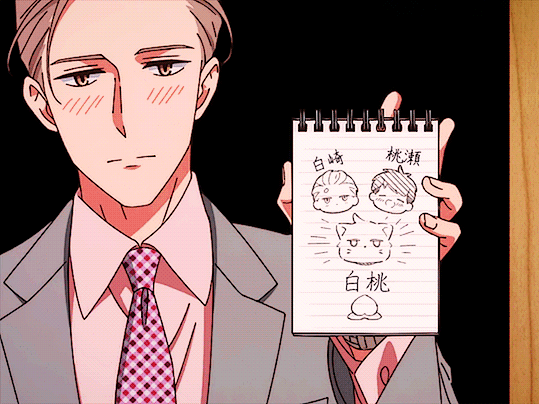
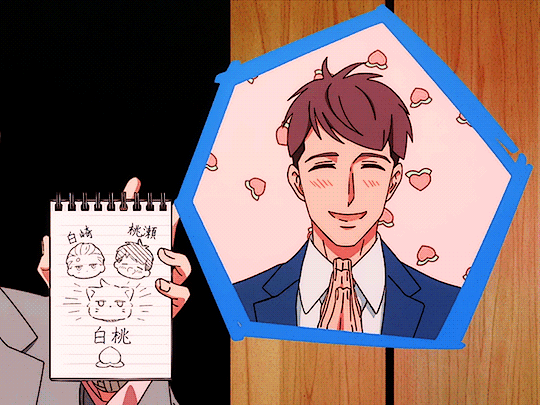
the cat's name... since it was you and me who found him...
"shiro" (白) = white & "momo" (桃) = peach -> on'yomi reading: 白 = ハク + 桃 = トウ
-> 白桃 (white peach) -> (はくとう) HAKUTOU
#atarashii joushi wa do tennen#my new boss is goofy#yuuichi shirosaki#kentarou momose#dotennenedit#;edits#animangahive#animangaboys#fyanimegifs#userartless#usergojoana#tuserelena#userdabiluna
220 notes
·
View notes
Text
The 100 Girlfriends with Really, Really, Really, Really, REALLY Stupid Names.
AKA: Everyone in this manga has a name that's a pun or a play on words like Ace Attorney and I'm gonna explain them to you from GF 1 to 28.

Aijou Rentarou - The first syllable of both his names, "Ai" and "Ren" are both spelled with different kanji for "love." "Rentarou" means "Feeling Love."

Hanazono Hakari - "Hana" means "flower" or "blossom" and "zono" means "garden". Her surname is a reference to the expression "Atama ga Ohanabatake," literally meaning, "flower garden in the head." This phrase is used to describe someone who is constantly delusional and imaginative, referring to her lustful daydreams and delusions along with the flower-shaped hairpins that she wears as a part of her character design. "Hakari" is also a homophone for "plan," highlighting her devious nature and scheming brain.

Inda Karane - Karane's full name is derived from a highly typical Japanese tsundere sentence "betsu ni anta no tame ni yattenain dakarane!" ("It's not like I did it for you or anything!") The "In" in "Inda" also means "hospital" which is where she keeps sending Rentarou.

Yoshimoto Shizuka - Yoshimoto can translate to "Lover of Books" and "Shizuka" literally means "quiet."
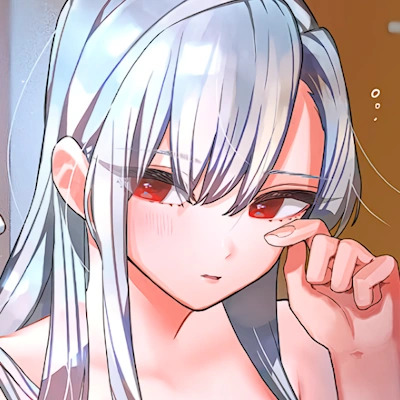
Eiai Nano - "Eiai" is derived from "A.I." and "Nano" is derived from "Nanotechnology," alluding to her straightfoward, computer-like intellect and mechanistic demeanor.

Yakuzen Kusuri - "Yakuzen" means "medicinal cooking" in literal translation, while "Kusuri" is a homophone for the Japanese word for drug or medicine.

Hanazono Hahari - Her name is the same meaning as Hakari's, fitting since she is also very deluded. Hahari also contains the word "Haha," which also means "mother."

Haraga Kurumi - The "Hara" in "Haraga" means stomach, referring to Kurumi's incredible appitite.

Meido Mei - "Meido" literally means "Maid"

Sutou Iku - Iku's full name is pronounced similarly to the Japanese word "sutoikku", meaning "stoic", as a testament to her high pain threshold.
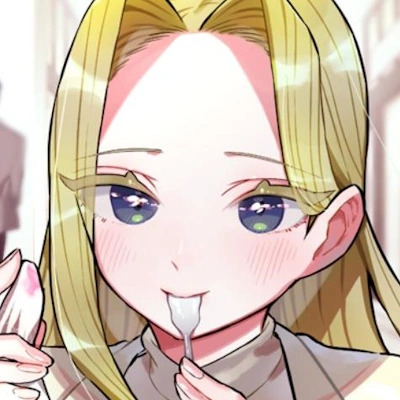
Utsukushisugi Mimimi - "Utsukushi" means "Beauty or Beautiful" Additionally, "Mimimi" has the kanji for "Beauty or Beautiful" twice, and employs the noma kanji, which repeats the kanji that comes before it. In her full name, the word "Beauty" is written in Kanji three times, and her family name and given name are pronounced in On'yomi and Kun'yomi, respectively. There are technically four counts if the Noma Kanji is counted. Therefore, her name can be interpreted as meaning "extremely beautiful."

Kakure Meme - "Kakure" means "to hide", and the "Me" in "Meme" means "eye," so her full name effectively means "two hidden eyes." The "Ka" in "Kakure" can also mean "splendor or flashiness" referring to the beuatiful face that she keeps hidden under her bangs as to not draw attention to herself.

Iin Chiyo - Highlighting Chiyo's position at her school, her full name written in hiragana strongly resembles the second half of the Japanese word for "class president," - "gakkyuu iinchou." "Chiyo" also has the kanji for "award" and "wisdom," and "Iin" has the kanji for "school" or "institution."

Yamato Nadeshiko - The phrase "yamato nadeshiko," describes the "personification of the idealized Japanese woman." Typically, a yamato nadeshiko is modest and courteous, with long, dark hair that is frequently styled nicely. They wear traditional Japanese attire, and they resemble the kind of woman Naddy's family attempted to turn her into before she rebelled and became obsessed with America. "Yamato" is a term for ancient Japan, and a Nadeshiko is a kind of pink carnation whose name translates to "Japanese Dianthus"
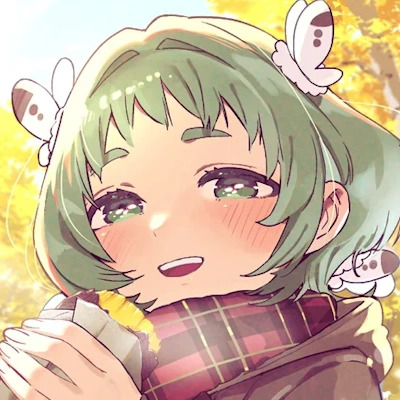
Yasashiki Yamame - "Yasa" means "gentle" or "affectionate", and "shiki" means "spreading" or "laying out" like one would do with seeds in a field. "Sashiki" spelled in a different kanji also means "cutting and planting." "Yamame" can literally be translated to mean "Mountain Woman" referring to Yamame's large size, but "mame" can also mean "hardworking" or "healthy" and "legume" which means "vegetable."

Momi Momiji - "Momimomi" is an informal way of saying squeeze or massage. "Momu" also means "to massage."
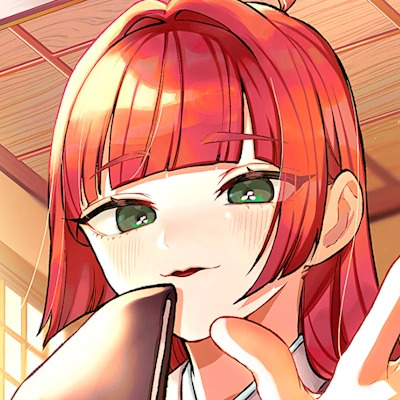
Yakuzen Yaku - Like Kusuri, the word "yakuzen" literally means "medicinal cooking," and her first name contains the same word, albeit written in a different kanji. Kusuri even mentions this in the manga directly, to which Yaku responds that her mother named her after her favourite tree, Yakusugi Cedars. Furthermore, when written using the Goroawase wordplay system, Yaku can be written with the numbers 8 and 9 ("Ya" and "Ku"), referring to how she is 89 years old.

Torotoro Kishika - "Torotoro" is a Japanese onomatopoeia that describes something becoming loose and viscous, which refers to the state Kishika enters when she is babied. Kishika also directly translates to "Flower Knight"

Kedarui Aashii - "Kedarui" means languid, listless or feeling sluggish and "Ashi" a slang version of the pronoun, "atashi" often used by gals. Beyond just Japanese, Aashi means "smile" in Hindi, which makes sense given the constant smile she bears on her face.

Nakaji Uto - The kanji for Nakaji is also used in the word "Chuunibyou," a colloquial term from Japan used to characterize early teens with grandiose delusions, a strong desire to stand out, and the conviction that they possess knowledge or secret hidden powers, i.e. exactly what Uto is. "Uto" is also an alternative interpretation of the kanj "shijin," which translates to "poet."
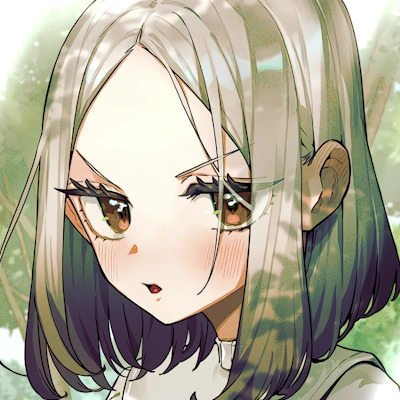
Meido Mai - Similar to Mei, Mai's surname, "Meido" is pronounced in Japanese similarly to how "maid" is. However, it is spelled with the wrong kanji, which could highlight how Mai is an inexperienced maid in comparison to the perfect maid that is Mei. "Mai" can also mean "little sister."
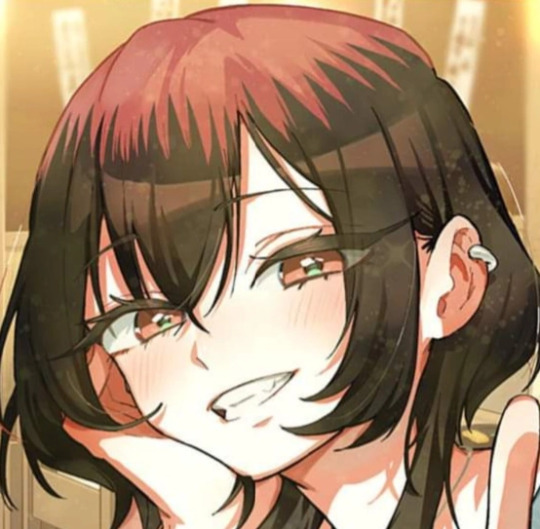
Bonnouji Momoha - The "Bonnou" in Bonnouji means "worldly desires," and "Momoha" means "108" referencing the 108 worldly desires of Buddhist terminology.
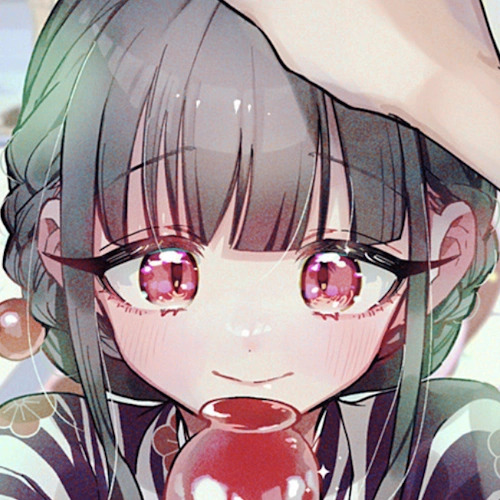
Baio Rin - Her full name is a pun on how the word for "violin" is pronounced in Japanese, but also sounds like the world "violent" or "violence." Her name is also a reference to "Biohazard" the Japanese name of the violent horror shooter game series, Resident Evil.

Hifumi Suu - "Hi Fu Mi" literally means "1 2 3" in the Goroawase wordplay system. Suu also means "number."
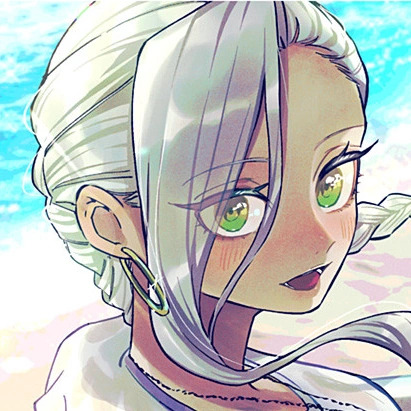
Kaho Eira - Kaho's name is a pun on "Capoeira" the style of Brazilian martial arts that she practices.

Nekonari Tama - Nekonari contains the kanji "Neko" and "Naru", which when put together means "to become a cat." Tama means "beads" but is also a homophone for "ball" referring to how cats like playing with balls of yarn.
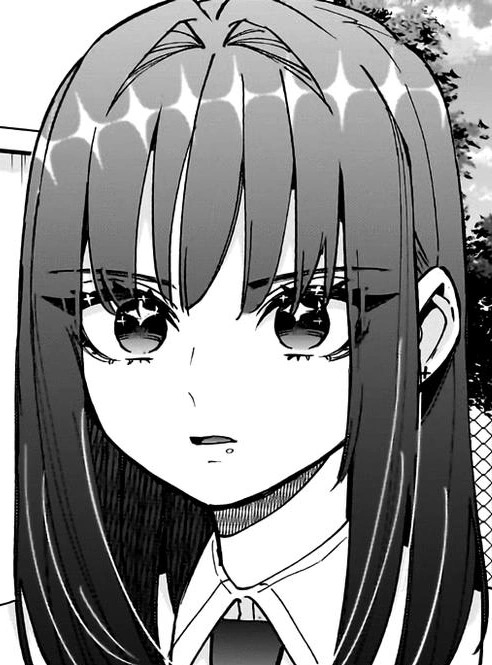
Saiki Himeka - "Sai" means "talent," "ki" means "strange." "Hime" means "princess" and ""ka" means "song." Himeka uses the first kanji of her first name and the second kanji of her last name for her stage name, "Kiki," literally translating to "weird princess" or "strange princess."
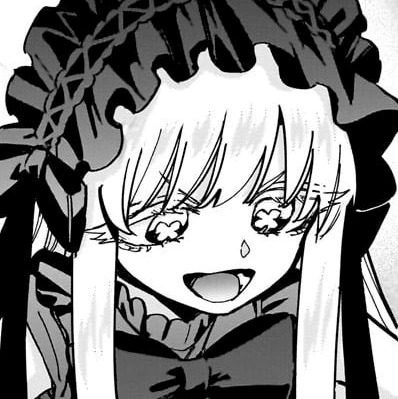
Dei Matsuri - "Matsuri" literally means "festival," and "Dei" is derived from the ending particle of Edo dialect speech. "Dei" effectively replaces the standard ending particles "desu" and "da," emphasizing Dei's cockney English dialect.

Usami Shiina - Usami is a short abbreviation of "Usagi no Mimi", which means "bunny ears." Additionally, her full name is a pun on "Ū samishī na" which means "Ugh, I'm so lonely," naturally referring to how Shiina is unable to engage in solo activities due to her autophobia
#the 100 girlfriends who really really really really really love you#kimi no koto ga daidaidaidaidaisuki na 100 nin no kanojo#aijou rentarou#hakari hanazono#inda karane#shizuka yoshimoto#nano eiai#kusuri yakuzen#hahari hanazono#kurumi haraga#mei meido#iku sutou#mimimi utsukushisugi#meme kakure#chiyo iin#yamato nadeshiko#yamame yasashiki#momiji momi#yaku yakuzen#kishika torotoro#kedarui aashii#uto nakaji#mai meido#momoha bonnouji#rin baio#suu hifumi#eira kaho#tama nekonari#himeka saiki#matsuri dei
34 notes
·
View notes
Text
fan translations are themselves an art form with their own history and lore, and I do have a lot of affection for little jokes in fansubbing. the other day I saw a (maybe fake?) screenshot where someone subbed a scene where a character eats onigiri as 'jelly donut'. this injoke is a reference to the infamous 4kids pokémon dub, and doesn't make any sense without that context, but anyone who's been around anime for a little while will know that story. if I saw that in a sub I wouldn't think 'hey that's wrong? that's onigiri', I'd groan and roll my eyes at the dumb joke.
returning to いただきます, there is something very charming in seeing all the different things that people come up with to put in place of that. fansubs are made for other fansubbers on some level.


that said, I feel like the best cases of 'subs being cute' are the cases when they find a really good analogue to something in the source language. in the Slam Dunk sub, a lot of the Sannoh players end the sentences with a cutesy ぴょん pyon, and Strawberino translated that as 'yo'. early in the film, Ryota hears this and is like 「ぴょん?」, and that very naturally translated into 'Yo?', and then the rest of the film they keep saying it and it works just as well as a running joke in English as it did in Japanese.
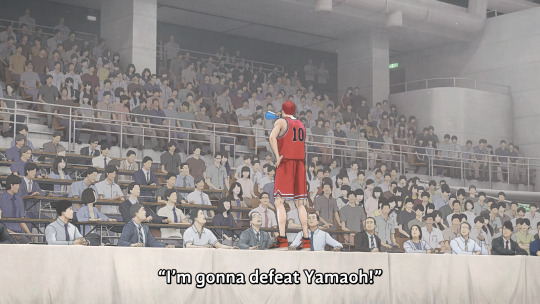
by contrast, there's another running joke where Sakuragi keeps referring to the school name 山王 Sannoh as Yamaoh, since the character 山 is read as yama when it's on its own as a word, rather than in a compound. In English there really is no way to make this pun work, so it might be quite confusing if you don't know that Japanese has on'yomi and kun'yomi. I couldn't think of a clever way to handle it, or an elegant non-flow-breaking way to insert a t/n, so I just left it with Sakuragi saying Yamaoh and figured that English-only viewers would infer that he's referring to Sannoh from context and doing so in an insulting way, even if they didn't fully get the pun.
31 notes
·
View notes
Text
Onmyoji Manga List
Back at it again, this time with all the Onmyoji novels series based manga I'm aware of! You can purchase all of these from Bookwalker without needing to be in Japan as for as I'm aware, but your experience may vary. Note that none have official English translations as of 2023.
Reiko Okano's Onmyoji
This series is apparently the manga adaptation for Onmyoji - it won the Tezuka Osamu Cultural Grand Prize (yes, that Osamu Tezuka) in 2001 and the Seiun award (think Japan only Hugo awards) for best comic in 2006. I haven't read much of it unfortunately (I can't afford to buy all the volumes!) It has 13 volumes and a sequel (where you get to see Seimei's son!!!) A few volumes of this manga have been translated in French, but I haven't been able to get my hands on a copy :(

Mitsuki Munku's Takiyashahime
A mostly straightforward adaptation of the two-part novel series Takiyashahime. If you can't read the novels, you can read this and get a rough idea of what's going on if you can't read much Japanese (or watch the drama special I mentioned in this post!)

Itou Sei's Takiyashahime aka 瀧夜叉姫 陰陽師絵草子
(Takiyashahime Onmyoji Ezoshi)
Okay okay SO THIS MANGA. It adapts Takiyashahime, but puts its own spin on the characters. Seimei is now Haruaki (which is just the kun'yomi reading of 晴明 - Seimei is the on'yomi reading. I could talk about nanori and azana more but that's for a separate post), a young, talented onmyoji who is nonetheless still a mere apprentice. He's a lot more hot-headed and kitsune-like, but also a lot more insecure with being friends with Hiromasa due to his social status. Yasunori also plays a larger role in this as Haruaki's main mentor/shishou instead of senior disciple, probably because the author had a previous manga that involved him as a character (unrelated to the Onmyoji series) I have MANY words about the flavour of Seimei/Hiromasa in this, but it's hard to explain without context!!!
This manga has absolutely GORGEOUS art - beautiful lineart, dynamic panelling, and lovely watercolour splash pages. However, it does not shy away from graphic violence, with multiple instances of animal death, human death (including children) and one instance of graphic sexual assault (which is in volume 3, pages 109-111, if you would like to skip it) It is currently ongoing as of 2023, and you can follow it here.

#瀧夜叉姫 陰陽師絵草子#takiyashahime onmyoji ezoshi#mitsuki munku#reiko okano#itou sei#minamoto no hiromasa#abe no seimei#fyi i've bought digital versions of all of munku's takiyashahime and the currently released itou sei volumes#i started a solo scanlation project for itou sei's manga a while ago but life got in the way...might have to bring it back again haha
30 notes
·
View notes
Text
Undead Unluck ep.12 thoughts
[English, Motherfucker, Do You Speak It?!]
(Contents: creative choices)
Overall this was a fairly standard episode, I think, at least for what we've come to expect. The action was cool but weirdly dark at points, they made a point of showing when more subtle abilities were in use, etc. etc.
There wasn't anything bad about the episode, but there wasn't much that allowed it to stand out from the rest
Except! The bit where Chikara was experiencing the world in English. They did a really good job with the cast speaking English. The cadence was a little off, but the syntax and pronunciation were pretty good!
It was also really interesting that whenever they wanted to show that Chikara and Fuuko were speaking Japanese and weren't being understood by someone, they were speaking in a clearly unusual way. I don't know if they were speaking gibberish or if they were speaking in on'yomi or something, but it was still apparent that something was off even when I don't know Japanese. If anyone has more insight on this, I'd love to hear it!
I'm very curious to see how they'll handle this in the dub. I'm hoping that they'll have Chikara's voice actor actually speak Japanese, but I get the feeling that they'll just have him speak English and pretend he isn't. Maybe they'll overlay the Japanese dialogue or something?
But yeah, an average episode for this series, but as far as I'm concerned that makes it a good episode as far as anime is concerned, and I can't ask for much more than that!
Until next time, let's enjoy life
16 notes
·
View notes
Note
Furigana (振(ふ)り仮名(がな), Japanese pronunciation: [ɸɯɾigaꜜna] or [ɸɯɾigana]) is a Japanese reading aid consisting of smaller kana (syllabic characters) printed either above or next to kanji (logographic characters) or other characters to indicate their pronunciation. It is one type of ruby text. Furigana is also known as yomigana (読み仮名) and rubi (ルビ, [ɾɯꜜbi]) in Japanese. In modern Japanese, it is usually used to gloss rare kanji, to clarify rare, nonstandard or ambiguous kanji readings, or in children's or learners' materials. Before the post-World War II script reforms, it was more widespread.[1]
Furigana may be added by character, in which case the furigana character(s) that correspond to a kanji are centered over that kanji; or by word or phrase, in which case the entire furigana text is centered over several kanji characters, even if the kanji do not represent equal shares of the kana needed to write them. The latter method is more common, especially since some words in Japanese have unique pronunciations (jukujikun) that are not related to readings of any of the characters the word is written with.
Furigana fonts are generally sized so that two kana characters fit naturally over one kanji; when more kana are required, this is resolved either by adjusting the furigana by using a condensed font (narrowing the kana), or by adjusting the kanji by intercharacter spacing (adding spaces around the kanji). In case an isolated kanji character has a long reading—for example 〜に携わる (where 携 reads たずさ, tazusa)—the furigana may instead spill over into the space next to the neighboring kana characters, without condensing or changing spacing. Three-kana readings are not uncommon, particularly due to yōon with a long vowel, such as ryō (りょう); five kana are required for kokorozashi (志、こころざし) and six for uketamawaru (承る、うけたまわる), the longest of any character in the Joyo kanji. Very long readings also occur for certain kanji or symbols which have a gairaigo (loan word) reading; the word "centimeter" is generally written as "cm" (with two half-width characters, so occupying one space) and has the seven-kana reading センチメートル (senchimētoru) (it can also be written as the kanji 糎, though this is very rare); another common example is "%" (the percent sign), which has the five kana reading パーセント (pāsento). These cause severe spacing problems due to length and these words being used as units (hence closely associated with the preceding figure).
When it is necessary to distinguish between native Japanese kun'yomi pronunciations and Chinese-derived on'yomi pronunciations, for example in kanji dictionaries, the kun'yomi pronunciations are written in hiragana, and the on'yomi pronunciations are written in katakana. However, this distinction is really only important in dictionaries and other reference works. In ordinary prose, the script chosen will usually be hiragana. The one general exception to this is modern Chinese place names, personal names, and (occasionally) food names—these will often be written with kanji, and katakana used for the furigana; in more casual writing these are simply written in katakana, as borrowed words. Occasionally this style is also used for loanwords from other languages (especially English). For example, the kanji 一角獣 (literally "one horn beast") might be glossed with katakana ユニコーン, yunikōn, to show the pronunciation of the loanword "unicorn", which is unrelated to the normal reading of the kanji. Generally, though, such loanwords are just written in straight katakana.
The distinction between regular kana and the smaller character forms (yōon and sokuon), which are used in regular orthography to mark such things as gemination and palatalization, is often not made in furigana: for example, the usual hiragana spelling of the word 却下 (kyakka) is きゃっか, but in furigana it might be written きやつか. This was especially common in old-fashioned movable type printing when smaller fonts were not available. Nowadays, with computer-based printing systems, this occurs less frequently.

30 notes
·
View notes
Text
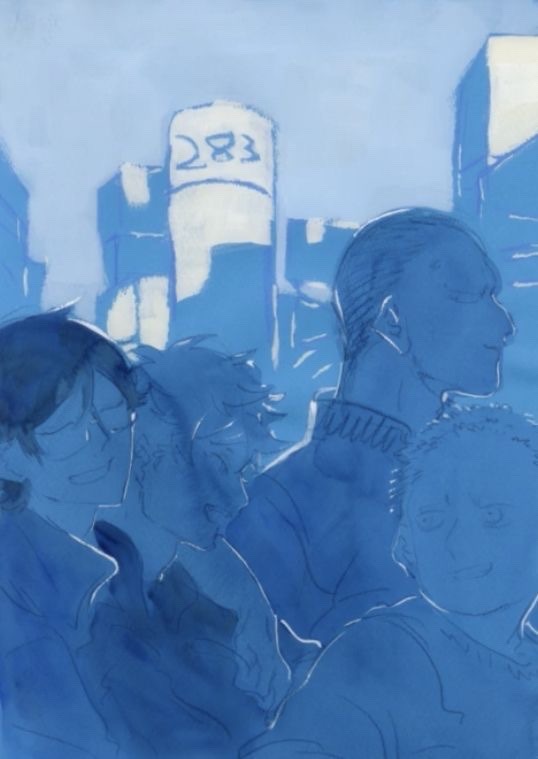
Btw if you ever wondered why Yamaguchi’s twitter username is 28_3, it’s because 283 can be read as
2: English, two / tsu
8: On'yomi / ba
3: Japanese/ san
Practically it reads as Tsubasa
#it’s her penname since forever#although yamaguchi can’t speak English#anyway#tsubasa yamaguchi#blue period#blp official art
56 notes
·
View notes
Text

Giyuu's surname contains the Kun'yomi reading of the kanji for "wealth" (冨 (とみ) tomi) and "knoll" (岡 (おか) oka). His first name contains the Go-on'yomi reading for "righteousness, justice" (義 (ぎ) gi) and "bravery, heroism" (勇 (ゆう) yū).
Source
#giyuu is brave and righteous and also a pookie that deserves hugs#also his og design rocks hard#22/24 posts today#Tomioka Giyuu#giyuu my beloved
10 notes
·
View notes
Text
Phonetic composition for Wanikani
Remember how I mentioned the book "The Kanji Code" in my lengthy article about on'yomi ("Chinese") readings of kanji?
Turns out the benefits of the book can be had for Wanikani users through the magic of "userscript."

What's the benefit
So, phonetic composition is how a great many of the kanji you're (supposedly) trying to learn are made. These particular kanji are called 形声 or "keisei" - "form-voice" kanji.
For the "form," they contain a part (often referred to as "radical") that gives you the meaning/semantic category of the kanji, like what the concept is mentally filed under.
For the "voice," they contain another part that hints you at how they are pronounced. It is commonly believed that kanji are only pictorials linked to concepts, but for keisei kanji this is not the case. A big part may not pertain to the meaning at all. Spotting the "voice" part can help you recall the on'yomi sounds of kanji much easier and systematically.

Yes, this is specifically for the "Chinese" readings. The Japanese readings are words from a language that had nothing to do with the formation of the original hanzi script, after all.
(Examples are in the original article.)
How it works
Websites are rendered by your browser, but how your browser does this can be extended and changed by scripts that rely on the Javascript language. Nowadays browsers like Chrome or Firefox allow you to install "extensions" that do various jobs for you - blocking ads, returning the ability to copy/paste to pages that block it, etc.
Wanikani, the kanji-learning website, incorporated early on support for so-called userscripts, both a blessing and a curse. Curse because whenever they want to change something on the website, a very vocal userscript culture will complain about breaking their stuff. Blessing because it allows you to extend what WK can do.

How it's done
You can basically follow the guide here, but I must admit I failed to do so because I think something's missing.
What you do is this:
Install Tampermonkey (guide) - this is the basic engine.
Install WK Open Framework (guide) - this is Wanikani's own script support.
Install Keisei support (guide)
Now, if this worked, you should see something like this on various pages - for kanji readings and radicals:

This will tell you if a phonetic component is present in your kanji or if it is itself present in another kanji as a phonetic component. The readings printed in bold are readings still used for that kanji, others listed are merely present in phonetic components but not in the original kanji. Because history.
It also shows you cases where the link is weakened because the pronunciation changed - in the example you see this marked in red. Basically there is a grading system (so far I've seen "heaven", "above", "middle", and "below").
A Caveat
There's only one caveat. Tampermonkey is very powerful. You need to trust the scripts you install, because it could potentially alter what you see on websites or enter/submit stuff for you.
On Chrome there is a good solution for this. When you click on the "Extensions" icon in the top right, you can select "This can read and change site data" from the three dots behind Tampermonkey.
I recommend doing it like this:
Select "On all Sites" during the installing of the WK Open Framework and the "Keisei" support script. (Else the install links have a habit of not working on Chrome.)
Then change it back to "When you click the extension".
Now go back to a tab with Wanikani open. Go back to "Extensions -> This can read and change site data" and select "On wanikani.com".
Congrats! Now Tampermonkey is only enabled on Wanikani by default.
Alternatively, use it in a separate browser. I haven't found an easy way to restrict permissions on Firefox, for example. But if you use it in a separate browser that you only use for Wanikani, you should be good.

Kanpai to the people who made this possible!!
#keisei#phonetic-semantic#learning japanese#wanikani#userscript#WK open framework#Wanikani open framework
9 notes
·
View notes
Text
Kanji With 1 stroke
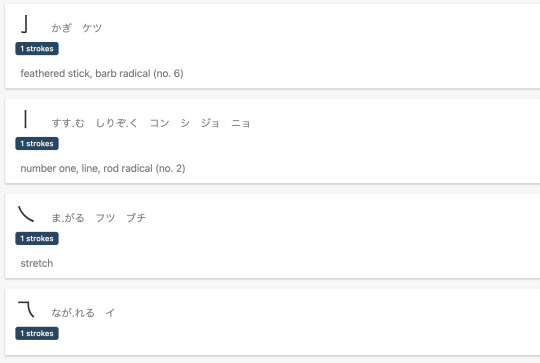
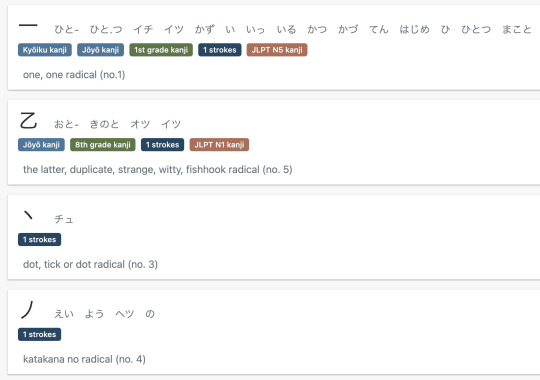

一
On'yomi イチ イツ
Kun'yomi ひと- ひと.つ
Nanori かず い いっ いる かつ かづ てん はじめ ひ ひとつ まこと
乙
On'yomi オツ イツ
Kun'yomi おと- きのと
丶
On'yomi チュ
丿
On'yomi ヘツ
Kun'yomi えい よう
Nanori の
丨
On'yomiコンシジョニョ
Kun'yomiすす.むしりぞ.く
乀
On'yomiフツブチ
Kun'yomi ま がる
乁
On'yomi イ
Kun'yomi なが れる
乚
On'yomiイン オン
Kun'yomi かく すかく れるかか すよ る
#langblr#japanese langblr#learn japanese#nihongo#japanese vocabulary#japanese vocabulary lists#kanji radicals#kanji strokes#learn kanji
55 notes
·
View notes
Note
I discovered recently that the 2 photos that were posted by people claiming that it's Yamanami Keisuke were not real photos of him. (Someone pointed out the family crest on the haori of the two men in the photos and they weren't Yamanami's). I've been looking for a portrait or photo of him but couldn't find any. The only description I found was Yagi Tamesaburo's: "he was not so tall, had fair-skinned lovable face"
Do you have any information about that? Anything about his appearance or personality would be greatly appreciated🙏
Is this the photo that people claimed was him?

This is actually a photo of Yamada Hachiro who was part of the First Japanese Embassy to Europe, but people often mistake it for Yamanami Keisuke and it was even used on his Wikipedia page at one point.
From the blurry photo, we can still see that the family crest (kamon) on his sleeve is different from Yamanami's family crest:

There are many fake photos of Yamanami Keisuke, but unfortunately, no confirmed photos of him exist.
According to shinsengumi-no-makoto:
Yamanami was “slightly tall” and had a pale complexion. His face was supposed to be somewhat round.
He is described as a gentle, amiable man and was very intelligent. He enjoyed reading Chinese poetry. Yamanami was loved by the people of the Mibu neighborhood. Yet despite all of this he could be very severe when he needed to be.
Aside from Kondo, it is said that he got along well with Okita, Todo, and Ito. His exact relationship with Hijikata is the subject of debate.
I'm not sure what was the original source for this description and it contradicts Yagi's statement that "he was not so tall". Yagi's quote is probably more accurate since it's first-hand.
The full quote from Japanese Wiki Corpus is: "he was not so tall, had fair-skinned lovable face, liked kids and talked to them wherever he met them (丈はあまり高くなく、色白の愛嬌のある顔。子どもが好きで、どこで逢ってもきっと何か声をかけた)" (from Rojin Mibu Banashi (八木為三郎老人壬生話) by Yagi Tamesaburo).
That page also describes his personality and reputation:
Sannan was a kind-hearted person and was adored by women and children in Mibu area.
There was a saying "kind persons are Sannan and Matsubara Chuji" which was popular in the Mibu until the early Meiji period.
According to Shinsengumi Ibun (exceptional matters), he had a good reputation among troops and in the Mibu area, unlike Serizawa Kamo.
Kojima Shikanosuke, a sponsor of Shinsengumi, described Sannan as a "warrior but literate".
Even Nishimura Kanefumi, who was known for his severe criticism of Shinsengumi, called him "a person who understands method of matters in some degree" in Mibu Roshi Shimatsuki.
We can see his personality first-hand through a letter and a Chinese poem that was written by him right before going to Kyoto:
The bounds of my aspirations lie beyond the edge of the heavens,
My endless loyalty is contained within one sword.
Whatever steep and perilous roads lie in the ten thousand ri ahead,
I make haste for the Imperial Capital to serve with honor and merit.
From this poem, it seems he was a person with a lot of ideals and high aspirations. While there are many theories about why he died, I think he died from depression caused by disillusionment towards the Shinsengumi.
From the letter and the poem, we can see that he was interested in the Chinese language.
Also, his name was likely pronounced Sannan (on'yomi pronounciation) instead of Yamanami (kun'yomi pronounciation).
11 notes
·
View notes